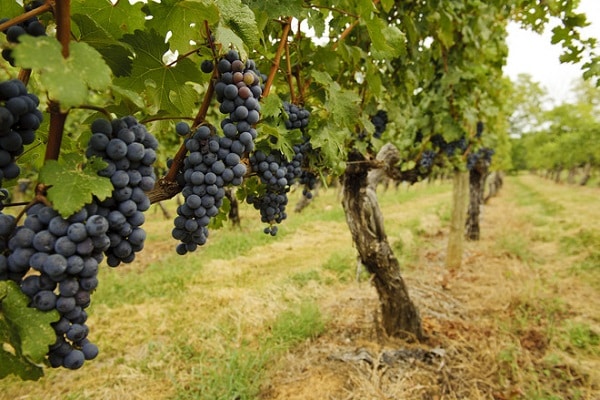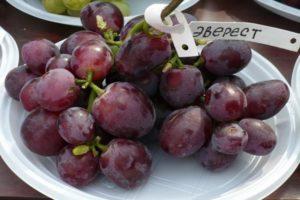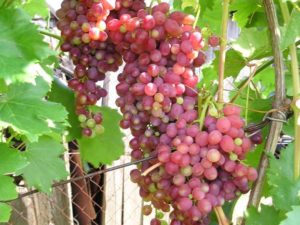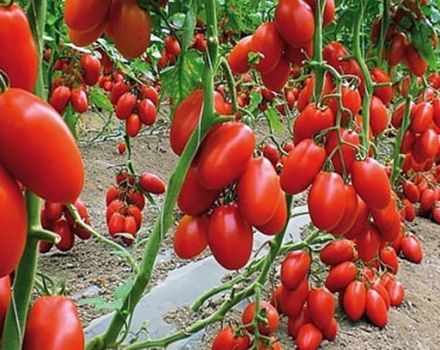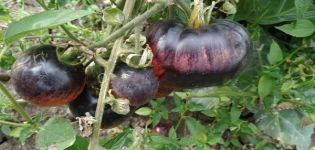Description of the grape variety Kishmish Jupiter, characteristics and features of cultivation
Seedless grapes have many benefits. It is not for nothing that gardeners dream of growing such varieties of berry crops. Among the seedless varieties, American breeders can boast of the Jupiter grape, which, in addition, is distinguished by its excellent taste and positive qualities in terms of growing conditions. It is known that the variety is cultivated even in regions with cold climates.
A bit of history
The Jupiter table grape hybrid was first obtained in the 90s of the last century by scientists at the University of Arkansas in the United States, John Clark, James Moore. The variety began its distribution from the southern regions of Russia and Ukraine. Regarding the species of raisins, it is highly appreciated by gardeners. The grape culture is undemanding to the growing conditions, therefore it is suitable for those who have just started to engage in viticulture. Jupiter is also cultivated in their summer cottages; it is happily cultivated by farmers for sale.
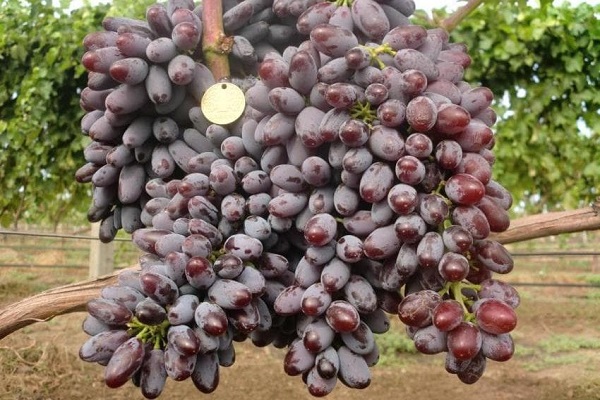
Description of the variety
A clear favorite among early maturing species of raisins, Jupiter has:
- well-developed root system;
- the vine is light brown in color;
- weakly dissected leaves of a light green color;
- flowers of female and male type;
- cone-shaped or cylindrical bunches of berries, arranged with a uniform density.
The description of the hybrid also includes the fact that although the mass of the bunch is small, within 200-300 grams, the berries have a sweet taste and juiciness. They change color as they mature, ranging from pinkish to deep blue. The fleshy structure of the berries has, in addition to sweetness, a nutmeg flavor.
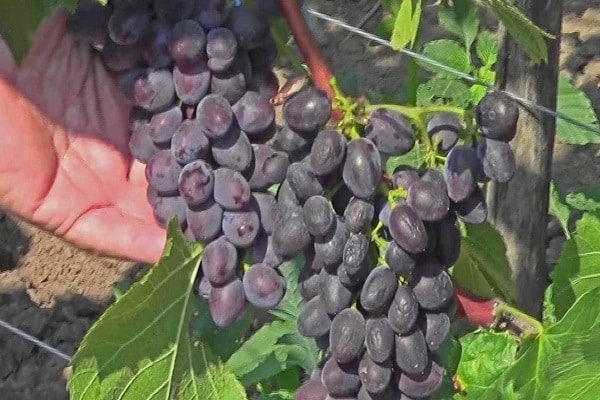
Jupiter grape characteristic
In a hybrid, such parameters are highly appreciated as the fact that grapes:
- ripens within 125 days;
- does not grow strongly;
- self-pollinating;
- withstands heavy loads on the vine;
- tolerates low temperatures down to -25 degrees;
- shows an average resistance to diseases;
- pleases with harvests up to 25 kilograms per square meter.
The raisin contains a lot of sugar within 22%, and acids only 6-7 g / l.
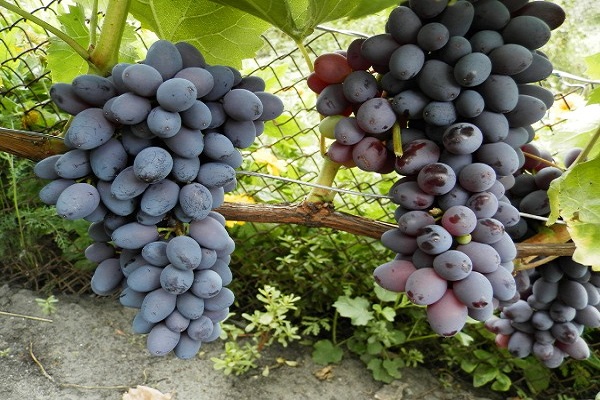
What are the pros and cons
Jupiter is not without reason recommended for cultivation, since there are many advantages in the variety. The hybrid stands out:
- early ripening;
- high yields;
- safety of fruits during transportation;
- frost resistance;
- attractive appearance of vines and bunches of berries.
Among the disadvantages, it can be noted that overripe berries can crumble from the shoots. In addition, grape bushes need preventive treatments for diseases.

Selection of seedlings and plot
For growing berry crops, the slopes of the plot on the south side are chosen, where there is more light and heat.
Saplings for planting are needed in the second year of life, cuttings, rooted or kilched, are also suitable. Before planting, Jupiter grape seedlings leave 2 strong buds, cutting off the aerial part. The roots also need to be slightly shortened, leaving a length of 15 centimeters.
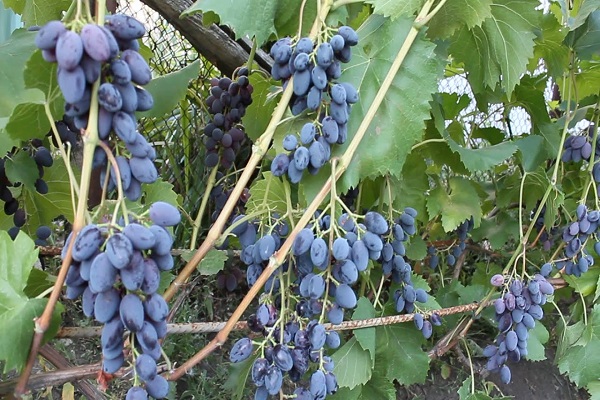
Landing procedure
The best time to plant grapes will be the second half of May or early summer. Dig holes in advance for each seedling 70-80 centimeters deep and half a meter wide. If there are many of them, then a groove can be prepared. The soil must be mixed with fertilizers: superphosphate - 100 grams, potassium salt - 50.
Shoots are placed so that the root collar is flush with the ground. A peg is driven in nearby, to which the vine will be tied.
2 buds on the shoot are spud with a layer of soil 6-8 centimeters. As soon as the first 2 shoots appear from the buds, they are tied to pegs.
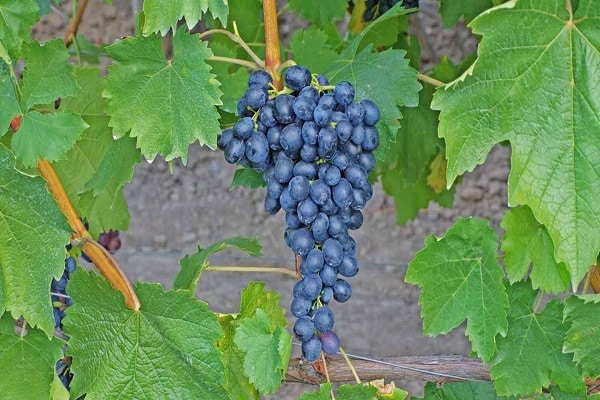
Care Tips
To create comfortable conditions for the Jupiter grape it is timely:
- watered;
- cut in the fall, leaving 6-8 eyes;
- fed with organic and mineral fertilizers;
- for the winter they are covered with earth and dry shavings or non-woven materials.
Every year the vine will grow, it must be cut off after fruiting and in the spring. As the soil is compacted on the plantation, the soil is loosened and weeded.
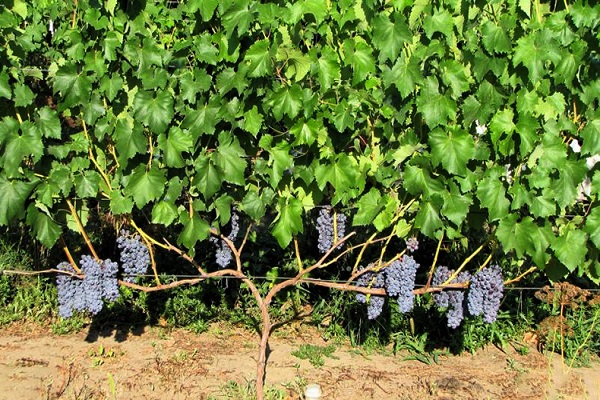
Diseases and pests
Since the Jupiter grape is moderately resistant to disease, it is necessary, in addition to prevention, to monitor the condition of the vine.
When a white powdery bloom appears on the leaves, the bushes are affected by the mildew fungus. It is possible to cope with the infection with Topaz and Tanas drugs.
Mildew appears as round oily spots on the outside of the leaf and white blooms on the back. Damaged parts are destroyed, and the bushes are treated with fungicidal agents.

Of the pests, root and leaf phylloxera are the most dangerous for grapes. Insects with long proboscis suck out the sap of the plant, while under the influence of saliva, protrusions in the form of pockets appear on parts of the grapes. The death of the root system or leaves occurs. To protect plantings from pests, planting material must be carefully selected.
Ripe grapes are harmed by the leafworm caterpillar. It eats away at the pulp, which causes the berries to dry out. Spraying with a solution of "Karbofos" is used in the fight against the parasite.
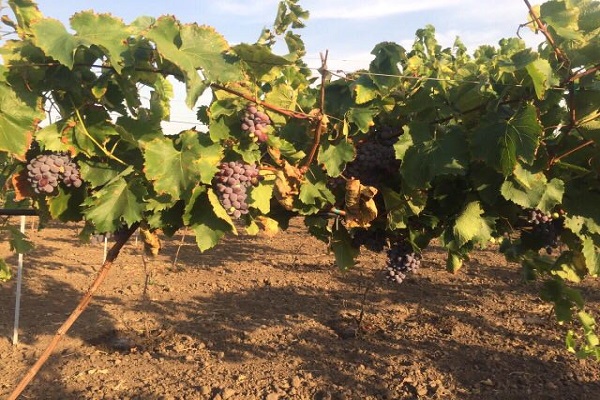
Reproduction methods
You can propagate Jupiter grapes:
- seedlings with a strong root system;
- grafting a stalk on a stock that has a supply of perennial wood and strong roots;
- layering from an adult fruiting vine.
Only when using seedlings can crops with the characteristics of the Jupiter variety be obtained. The use of the grafting method will lead to the loss of some qualities of the hybrid. Here you need to choose the right plant for the stock.
